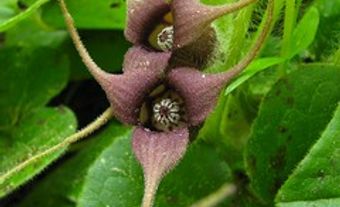This article was originally published in Maclean's Magazine on January 20, 1997
Genetically-Altered Foods Debate
With its fictional reconstruction of dinosaurs from prehistoric bits of DNA, the thrilling 1990 best-seller Jurassic Park and the spinoff blockbuster movie popularized the notion of genetic engineering. Neither the book nor the film, however, did much to increase public understanding of a complex and controversial subject. By contrast, the humble New Leaf potato, a creation of Monsanto Co. of St. Louis lacks the star appeal of a Tyrannosaurus rex. But as one of 19 genetically engineered products now approved for sale by Health Canada, it is helping to focus the debate over the new foods emerging, not from nature, but from laboratories. Critics accuse the genetic engineers of playing God with a reckless disregard for potential consequences. "We are creating species which do not exist in nature," says Tzeporah Berman of Greenpeace International. "And no one can say they know the long-term ecological effects of this."
Typically, genetic modification involves the alteration of a species' genetic structure, including the process generally known as genetic engineering: the insertion of genetic material from one species into another. Through those processes, biotechnologists are creating new plants with unique properties. For the New Leaf, Monsanto's specialists added a single gene from a common soil bacterium to a Russet Burbank potato to create a variety with an attractive property - it produces its own pesticide. To Richard Gorrill of O'Leary, P.E.I., one of a group of farmers who in 1995 harvested Canada's first commercial crop of genetically engineered potatoes, the New Leaf is simply "another option, another method of controlling pests." It is one of two genetically engineered varieties of potato, five of canola, four each of cotton and corn, three of tomato and one of soybean that have received Health Canada's blessing for sale. New Leaf potatoes have already been distributed to stores in Eastern Canada, in most cases with no labels to distinguish them from naturally developed products.
Advocates dismiss criticism of genetic engineering as "biotechnophobia." Manufacturers maintain that their altered plants only reach the marketplace after passing a battery of tests to ensure their safety. And their use, say the advocates, is justified by the advantages they provide - reducing the need for environment-damaging pesticides by as much as 50 per cent, for instance, or increasing crop yields in a world where the population is expected to top eight billion by 2020. According to molecular biologist Maurice Moloney of the University of Calgary, many of genetic engineering's critics make arguments that would stop all development. "What they're basically saying," adds Moloney, "is should we ever invent anything because of the risk of unpredictable consequences?"
But Berman and other opponents contend that mixing the genetic properties of unrelated species carries with it such risks as creating life-threatening allergic reactions in humans, or more resilient crop pests, weeds and bacteria. They point to the experience of Pioneer Hi-Bred International Inc. of Des Moines, Iowa, which produced a soybean containing a gene from a Brazil nut. In a report published in The New England Journal of Medicine last March, scientists at the University of Nebraska said the new gene, which increased the soybean's nutritional value, also caused a reaction in people allergic to Brazil nuts. Pioneer Hi-Bred, which scrapped the product before it ever reached the stores, cites the experience as an example of how its testing safeguards work.
Genetic engineering's opponents also point to a 1989 incident in which at least 37 people died and more than 1,500 became ill in the United States after consuming tryptophan, an amino acid made by the Japanese chemical company Showa Denko K. K. and sold without a prescription as a "natural tranquilizer." Showa Denko genetically engineered bacteria to produce high concentrations of tryptophan. Investigations showed that the deadly batch contained a toxin that caused an immune-system disease called EMS. Some experts concluded that the poison came from the genetic engineering process. "The same manipulations that caused the bacteria to produce more tryptophan also altered the metabolism so that the bacteria produced this powerful toxin," says molecular biologist John Fagan, a former researcher at the U.S. National Institutes of Health and current chairman of the chemistry department at Maharishi University of Management in Fairfield, Iowa. To this day, however, the U.S. Food and Drug Administration says researchers have been unable to find conclusive evidence linking genetic engineering to the fatal outbreak.
Observing the debate, geneticist Doug Powell of the University of Guelph in Ontario says the truth about genetic engineering probably lies somewhere between the positions of Greenpeace and the companies promoting the technologies. "Are there risks with agricultural biotechnology?" he asks. "Absolutely. The question is: can those risks be managed? And they can."
Genetically altered foods have been a fact of life in Canada since September, 1994, when the Belgian firm Plant Genetic Systems NV received the first federal approval for a canola variety that does not produce pollen. Having received Health Canada's green light, manufacturers are free to sell their new strains. But there is no central monitoring of which foods, if any, ultimately appear on store shelves. Although there was considerable publicity surrounding the approval of Davis, Calif.-based Calgene Inc.'s slow-ripening Flavr Savr tomato in 1995, for instance, that variety has so far not been offered for sale in Canada.
Industry representatives say they are proud of the safety testing they have in place. Bob Ingratta, Monsanto's director of government relations in Ottawa, says crops like the New Leaf potato or his company's canola variety that is resistant to Monsanto's Roundup herbicide are first grown for several generations in the laboratory. The plant's entire genetic makeup is then mapped and screened for allergens - substances known to cause allergic reactions. "We know what the canola plant should look like," Ingratta says. "We know what the nutritional elements should be, what the composition should be, what potential toxins or allergens might be in the plant, if any, and we check for those."
But critics have other concerns, including the potential for unintentionally creating infectious bacteria resistant to antibiotics. That dispute is active in Europe since the Swiss chemicals company Ciba-Geigy AG sought the European Union's permission to market a gene-modified variety of corn. Last June, several EU environment ministers expressed concern over the proposal to approve the corn, claiming that an antibiotic gene element - added to the corn in the process of genetic alteration - could undermine the effectiveness of a common antibiotic, ampicillin, used to fight infections.
The European Commission approved the grain last month, based on recommendations from three sets of EU scientists. But Greenpeace has denounced the ruling and continues an aggressive European campaign of demonstrations against the importation of an American-grown soybean designed to tolerate a herbicide. "These genetically engineered soybeans have not been tested for their long-term effect on human health or the environment," says Greenpeace's Berman. "And soybeans are in about 60 per cent of all of our processed food, from chocolate to bread to margarine."
In Canada, regulations governing genetic engineering are in a state of flux. Ottawa is reviewing current policy that does not require genetically engineered food to be labelled unless it is nutritionally different from the original or contains an allergen. The government also has until April to respond to a recommendation from the House of Commons standing committee on environment and sustainable development that it create an independent advisory commission to monitor the practice. Meanwhile, some experts express doubt that there is legislation in place to protect Canadians from a potentially damaging product. Mark Winfield, director of research at the Canadian Institute for Environmental Law and Policy, says: "it's not actually clear what the government could do to stop one of these foods from entering Canadian commerce" even if Health Canada withheld its approval.
Throughout the debate, Richard Gorrill continues to tend his 700-acre farm in western Prince Edward Island with his father, two brothers and his son. He plans to put another crop of New Leaf potatoes in the ground in the spring. "Sometimes the environmentalists have legitimate concerns," he allows, adding: "I guess as far as my view goes, those concerns have been answered." For Greenpeace and other critics of genetically altered foods, the questions are still outstanding.
Maclean's January 20, 1997

 Share on Facebook
Share on Facebook Share on X
Share on X Share by Email
Share by Email Share on Google Classroom
Share on Google Classroom


